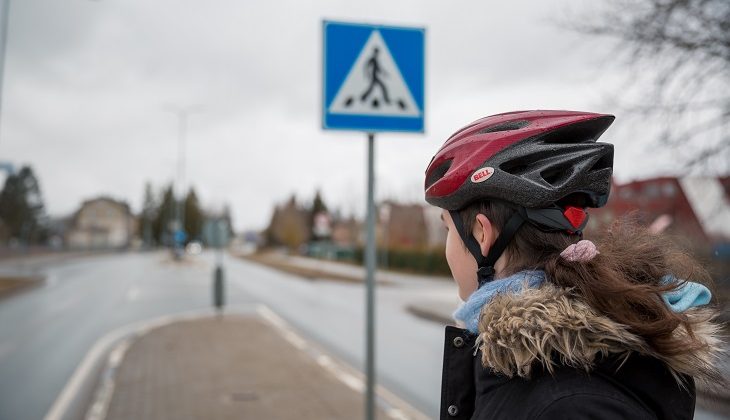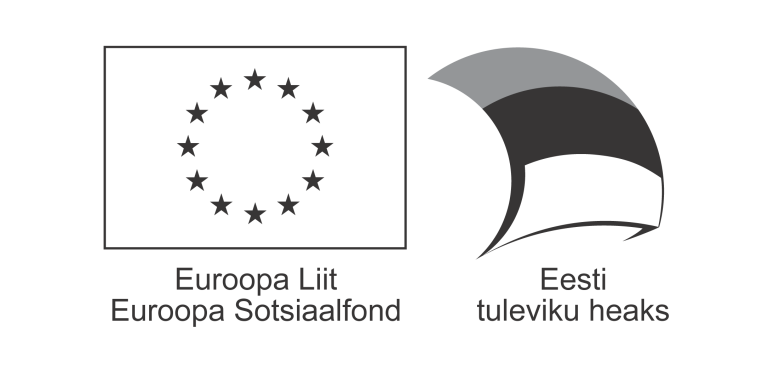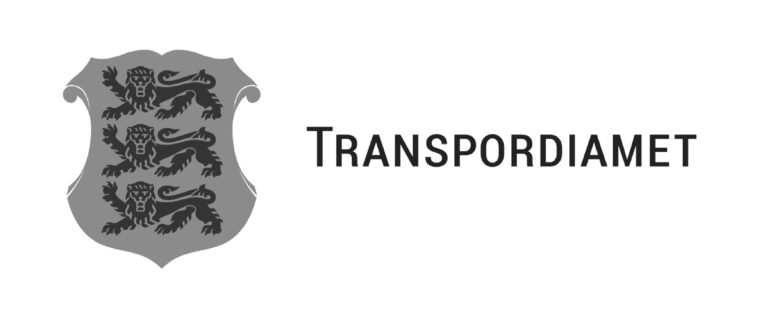Wearing a helmet may sometimes feel like a tedious task when you’re riding a bike or electric scooter, enjoying the breeze and the feeling of freedom. Comparing the speeds of pedestrians and cyclists, it is quite clear why it is compulsory for cyclists under the age of 16 to wear a helmet in Estonia.
Cyclists of all ages, persons who ride light electric vehicles, and faster-moving pedestrians, e.g. those on rollerblades, skateboards, scooters, etc., are also advised to wear helmets.
Why to wear a helmet?!
Wearing your helmet correctly will significantly reduce the risk of head injuries. The bruises you receive from a fall will heal over time. In a few weeks or months, the broken bones in your hands and legs will be fixed with the help of doctors. However, a head injury can cause a very serious trauma and irreversible damage to health.
To reduce head injuries, always wear a helmet when riding a bike or light electric vehicle! By doing so, you will set an example and inspire others to protect their health in traffic.
How do you choose a helmet?
Bike helmets can be divided into two categories: road and off-road helmets.
● Road helmets are more aerodynamic and do not need as many very large air vents because of higher speeds and better airflow.
● Off-road bike helmets must have as many air vents as possible to facilitate air flow at lower speeds. Most off-road bike helmets have a small brim in the front to protect against the sun, dirt, and branches when riding in the forest.
BMX helmets can also be used for riding a bike or light electric vehicle. However, keep in mind that they have less air vents to provide maximum protection in the case of a fall on the ramp. Remember that you can get quite hot in the sun pretty fast when wearing a black BMX helmet, for example. Keep track of how you’re feeling!
The price of a helmet mainly depends on its weight (lighter ones start from 250 g), and the number of air vents. To ensure the manufacturer’s warranty, buy a helmet from an approved manufacturer from a bike shop.
NB! The helmet is made of a material that absorbs impact energy in the case of an accident. After a serious fall, micro-cracks may appear in the helmet that are invisible to the naked eye, and the helmet should be replaced immediately. The useful life of a helmet is also reduced by any slight fall on asphalt. Take care of your helmet!
When choosing a helmet, keep in mind the following:
● The helmet must comply with quality standards and bear the CE EN 1078 marking. The helmet should also have bright colours and/or a reflective band to make you visible in traffic.
● The helmet must fit you well. Most helmets come in two sizes 54–57 and 58–61 (head circumference in cm).
To prevent your helmet from moving, dropping onto your eyes, or falling onto your neck, you need to learn to adjust your helmet. The straps move slightly when worn, so you should check the straps weekly and adjust them if necessary.
How do you put on a helmet correctly?
Use this simple formula to fit and secure your helmet: 2V1.
- The helmet must be straight on your head and protect as much of your forehead as possible.
- There should be a gap of about 2 fingers between your eyes and the edge of the helmet (see the picture below).
- The straps should form a V-shape under the ear (move the bracket).
- The chinstrap must be attached from the side (not directly under the chin). You should be able to fit one finger between your chin and the strap, no more.
- Lastly, turn the adjustment knob on the back of the neck so that the helmet fits comfortably around your head (it should not feel too tight). Avoid over-adjustment in the summer heat, otherwise you’ll soon get a headache.
If the helmet fits the wearer’s head shape and is adjusted correctly, it is very comfortable, does not feel too tight or obstruct vision.
Which helmets are unsuitable?
● A helmet must not be too large – a helmet that moves around may drop down onto your eyes and obstruct vision. If you fall, a helmet that’s too big will not protect you from impact.
● A helmet must not be too small – if you fall, a helmet that is too small will not protect you from impact.
What should you consider when wearing a helmet?
● Do not push the helmet too far back on your head – you’ll leave the front of your head unprotected. Helmet straps that have dropped to the back of your head need to be adjusted properly. Use the 2V1 formula!
● Only a very thin sports hat or a snood scarf may be worn under the helmet.
● Thicker hats or caps should not be worn under a helmet
○ You cannot fit the helmet properly and snugly on your head when you are wearing a thick hat.
○ A cap will move the helmet in the event of a fall, leaving your forehead exposed. Wear sunglasses instead of a cap!
● If you have your hair in a ponytail, make sure that the ponytail does not push the helmet too far down onto your eyes. This makes it very difficult for you to monitor traffic and leaves the back of your head unprotected.
● A helmet must not be kept in a place that is exposed to the sun, as the helmet’s material cannot withstand high temperatures and its protective properties decline. Keep the helmet out of direct sunlight or keep it indoors.
Have a safe ride!
The article was written by the Transport Administration www.transpordiamet.ee in the youth information portal Teeviit in 2021.
The aim of the Transport Administration is to create a safe, comfortable, and sustainable integrated traffic environment and to develop smart and interconnected modes of transport that facilitate mobility.
Training videos of JR: Choosing a helmet (in Russian) https://youtu.be/4Njc8ZvEfV0







